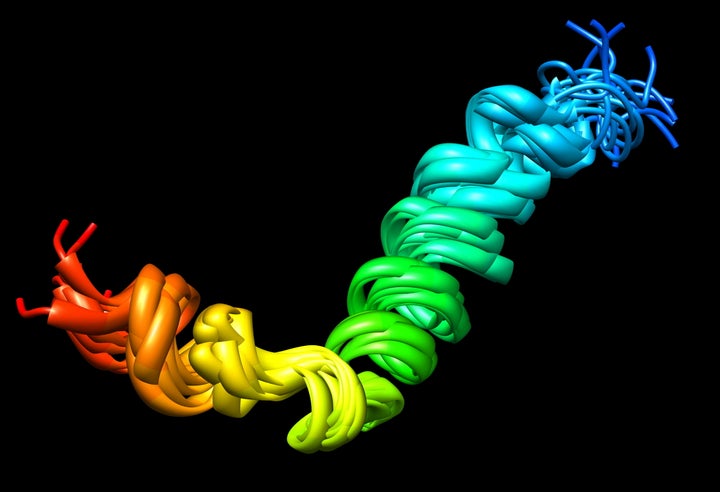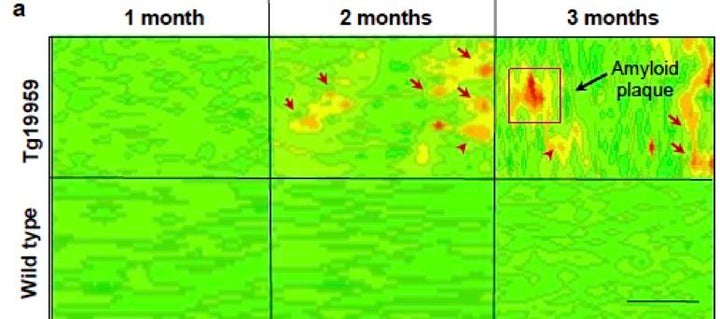As many as 5 million Americans are living with Alzheimer’s disease today, and that number could more than triple by 2025. The brain disorder is the most common form of dementia, causing memory loss that worsens over time and eventually pushes the body to shut down. (Not to mention that it’s also one of the costliest health conditions in the U.S.)
Some drugs can slow down the development of Alzheimer’s in some patients, but they don’t work for everyone ― and there is no cure.
But new research has captured more detailed images of the brain at earlier stages of Alzheimer’s disease than have ever been seen before. The pictures reveal an important clue about how the illness begins, which researchers say could help them design more effective medications.
“Alzheimer’s disease has been tremendously challenging for medical research mainly because it is a disease of aging that attacks the most complex thing we know: synapses, which allow us to think and remember,” said study author Gunnar Gouras, a professor in experimental neurology at Sweden’s Lund University.
For this research, Gouras and his colleagues used a synchrotron accelerator, a type of super-bright, high-quality X-ray machine. It was the first time the machine had been used to look at this particular early stage of Alzheimer’s, Gouras said.

Researchers have previously observed certain changes in the brain ― the buildup of a type of protein that creates harmful plaque and other damage ― as the first stages of Alzheimer’s disease. This process kills off the healthy neurons in the brain until it eventually stops functioning.
The high-powered X-ray machine allowed Gouras’ team to see what was happening in the brains of mice developing Alzheimer’s before those proteins started causing plaque to build up. The mice had been genetically engineered to develop the condition in the same way that people do.
The images revealed that the plaque-causing proteins have a different structure than was previously assumed. It is similar to the structure of another abnormal protein known to cause transthyretin amyloidosis, a different rare disorder of the nervous system.
Gouras and his colleagues are excited because there is already a drug available that works to slow down transthyretin amyloidosis.
That drug isn’t guaranteed to help people with Alzheimer’s, Gouras said, but it might. More importantly, the study suggests a pathway for designing drugs that would better target the structure of those proteins in Alzheimer’s, he said.

Better understanding Alzheimer’s is an important step in finding more effective treatments, other experts have said.
“Our understanding of this very complex disease is still rudimentary at best,” Bruce Lamb, executive director of the Stark Neuroscience Research Institute at Indiana University, previously told Healthline.
“We still understand very little about all of the changes occurring within the brain over the 20 to 30 years’ disease course. This makes it very difficult to both identify potential targets and also know when to target these therapies over the disease course,” Lamb said.
The new research may also have implications for diagnosing Alzheimer’s disease at earlier stages, Gouras noted.
He emphasized that his team’s focus will be finding better treatments. “The next step is to test whether [that transthyretin amyloidosis drug] might also be helpful for Alzheimer’s,” Gouras said.
There’s not an immediate answer here for people suffering from Alzheimer’s, but the medical researchers are getting closer.
This reporting is brought to you by HuffPost’s health and science platform, The Scope. Like us on Facebook and Twitter and tell us your story: scopestories@huffingtonpost.com. Sarah DiGiulio is The Huffington Post’s sleep reporter.
